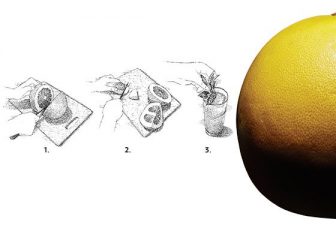Well, that depends on how you look at it…
Scientists are predicting that climate change will cause upheavals in the patterns of rainfall, drought, floods, and desertification. The latest report by the Intergovernmental Panel on Climate Change (IPCC) warns that temperatures in the Middle East have increased between 2-3 degrees Celsius in the last century, faster than the global average of about 1 degree. As a result, our region is expected to have fewer – but more violent -rain events, increased drought, and decreasing resources of fresh water. We are currently experiencing a water crisis that is considered severe, although a large part of it is due to chronic mismanagement of freshwater resources.
The latest projections of the IPCC predict a decrease of 15-25% in rainfall over large regions of the Fertile Crescent, leading to water shortages, and increased competition for increasingly scarce water resources.
But is the “conventional wisdom” accurate? Any modeller will tell you that the only certain thing about any forecast that we make is that it will be wrong. The only question is, how wrong? All models are a simplification of reality, and contain inherent errors. The closer the assumptions of the model are to reality, the better the results will be.
The Environmental News Network (ENN) reports on a pair of studies conducted by Dr Jason Evans from the University of New South Wales Climate Change Research Centre, looking at projections of rainfall in the Middle East given by different models. The IPCC projections were based on a global model, which does not capture regional conditions, and is not the best tool to use for predicting climate change effects on smaller scales. A reanalysis of the IPCC data by Dr. Evans confirmed the findings of decreased rainfall.
However, a regional scale model, which included more detailed information about topography and inter-annual variations, predicted a different scenario. According to this preliminary study, even though overall storm activity would decrease, channeling of cool, humid air further inland could lead to an increase of 50% in precipitation over the Tigris-Euphrates watershed. ENN quotes Evans: “We need to confirm this result with other models, but a 50 per cent increase in rainfall in such an important agricultural area is a much more hopeful scenario than a 15 per cent decline.”
So what does this mean? Most importantly, it emphasizes that our knowledge of the climate system of the Earth is quite limited, and all of the predictions about global warming and the resulting climate change are only our best guess. This is a far cry from certainty: the picture is being fine tuned constantly, and the predictions and conclusions could differ in each iteration.
On the other hand, if we are critical of these predictions (as we should be), we should be even more critical of the alternative explanations to global warming caused primarily by human actions. This is because no one has presented a different explanation that fits with our observations. If there are holes in the consensus view, any other scenario is riddled with many more problems and inconsistencies. As scientists, we must accept the best available explanation, until it is supplanted by a more successful model. So even though there is disagreement on the future rainfall in our region, that does not invalidate the overall consensus prediction.
Bottom Line: Since we don’t know for sure what will happen, and our best guess indicates we might experience, um, “slight technical difficulties,” we should work to prevent the uncertain future, rather than gamble on a favorable outcome.
:: ENN – Climate change may boost Middle East rainfall
(mideast photo credit: Courtesy of NASA)
(earth photo credit: Courtesy of NASA)




Thank you for a great post based on the facts where available and that also expresses the uncertainty. We live in a high desert area here in Steamboat Springs that is much cooler than most areas in in the middle east but have the same questions on what will happen going forward. We also have similar water issues given the system in the American west where you use all of your water rights or lose them no matter how in-efficiently you use them. This past year we had a very cold winter with record snows which may represent a the shift in precipitation you refer to or just be a random event.